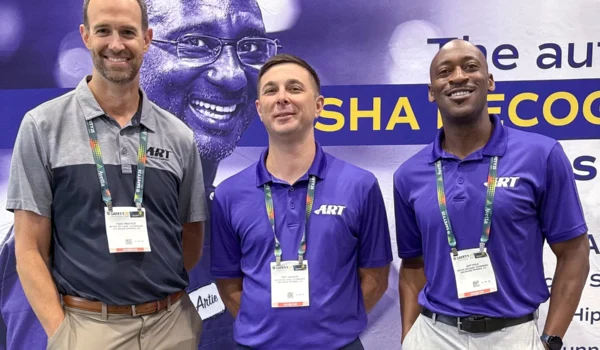Dr. Jason Pajaczkowski walks us through the continual updating ART protocols undergo to reflect the latest soft-tissue research.
Adaptation of ART treatment within the spectrum of current literature
While a final reconning with respect to the mechanism of soft-tissue therapy remains elusive, our current understanding of literature suggests two mechanisms of action: biomechanical and neurophysiological.
Active Release Techniques® (ART®) treatment continues to embrace and adapt to new evidence, ensuring ART treatment is safe, effective, and efficient.
How are ART protocols continually updating?
There is one current topic that highlights this ongoing commitment to evidence-informed ART protocols: force transmission, and its interplay with myofascial mobility, pain, overuse, and tendons.
Trading on both well-established and newly discovered biomechanical features, let us consider the impact of fascial mobility and tendon pain.
Here is an example.
During muscle contractions, myofascial tissues transmit load to a tendon, and an initial deformation or strain occurs prior to it fully bearing the load. This corresponds to the “toe region” of the stress-strain curve.
The amount of strain will depend on the stiffness of the tendon as per Fung. Despite popular belief, injured tendons are less stiff than their non-injured counterparts.
This lack of stiffness has important consequences.
The muscle to which is attached and the one producing the force is required to work harder and shorten to tightly draw the connective tissues which then become mechanically coupled to the joint.
This is a definitive example of how tendon failure can lead to mechanical overuse of an accompanying muscle.
In addition to this increasing demand, it is noted that when working at higher strains, connective tissues shift closer to the failure range of the stress-strain curve, becoming more prone to injury.
Some supporting findings
A substantial percentage of the force exerted by a muscle is not transmitted solely to its accompanying tendon, but rather to adjacent myofascial tissues through the layers of fascia.
The landmark work of authors like Yucesoy and Huijing has brought this very important concept, force transmission, to the forefront.
The implication here is that prior to a force being transmitted, fascia need to become mechanically coupled in shear.
If the interfascial connective tissue is stiff and hypomobile, the adjacent tissues will become mechanically coupled sooner, and the muscles will lose independent range of movement. Moreover, if shear strain between layers of fascia is reduced, the layers can adhere and lose mobility altogether.
The option with respect to interventions necessitates that said treatment paradigm has a mechanism by which we can appreciate abnormal fascial mobility and flowing lines of myofascial tightness.
Adaptation of ART protocols
To adapt to this more conventional view of the musculoskeletal system, ART protocols have adopted several strategies.
- Revamping and the reemergence of the ART Diagnostic Algorithm.
The first ART seminar attendees are taught how to palpate all the tissues they are treating and then use this palpation to assess all the myofascial components associated with the movement that recreates a patient’s pain, following lines of tension and aberrant myofascial tension to arrive at the nexus of the tissues responsible for creating movement dysfunctions, pain, and tightness.
This was a massive shift in the orientation of the Level 1 ART seminars, and it has paid enormous dividends in clinical application.
- The introduction of Level 2 ART seminars.
The introduction targets the relationship between the muscles.
ART seminar attendees learn how to assess relative motion and determine where early and abnormal coupling exists and then continue with instruction on how to provide an effective intervention to alleviate it and restore normal tissue motion.




